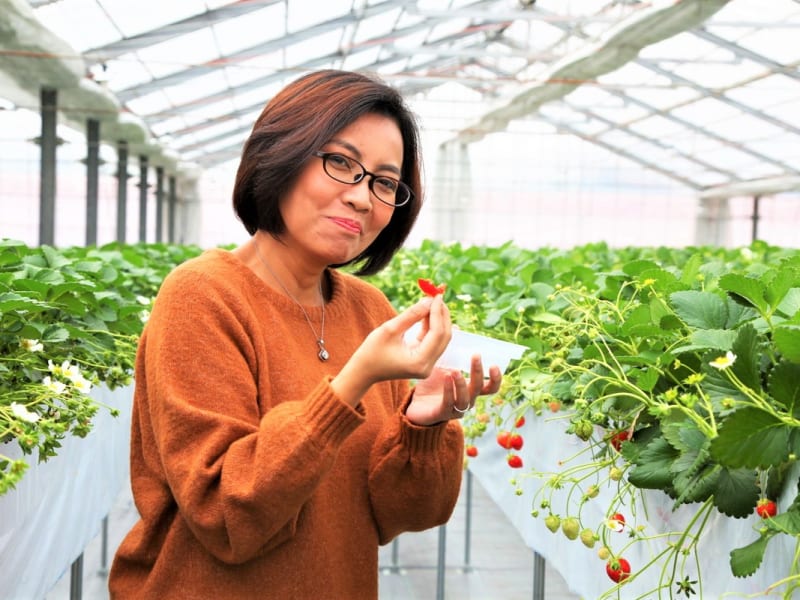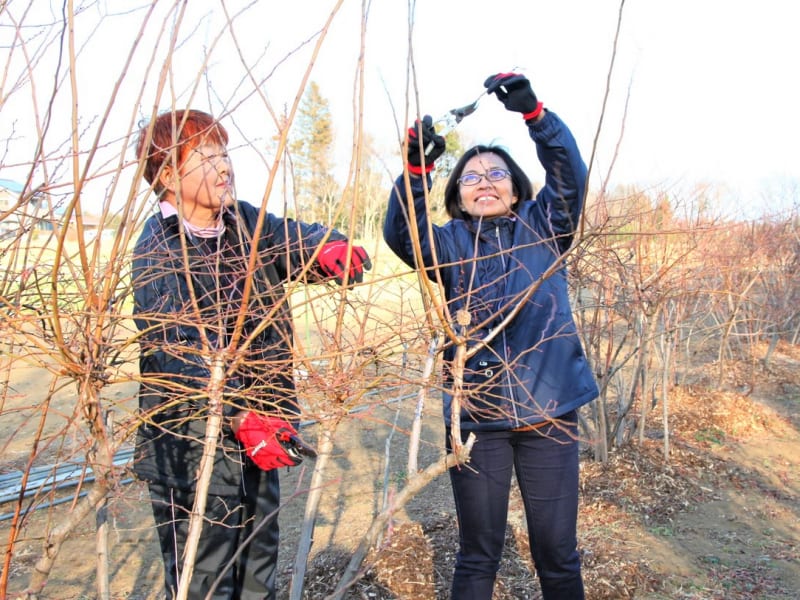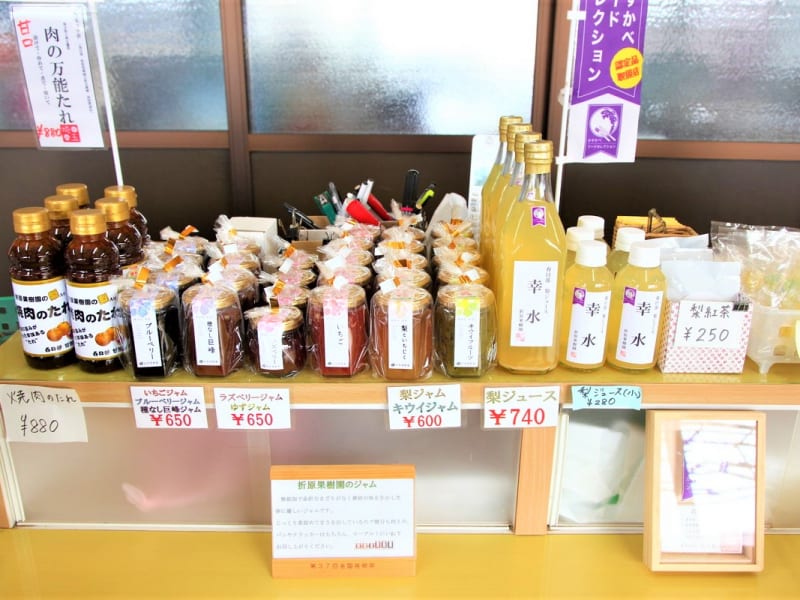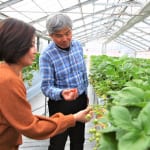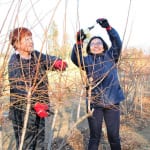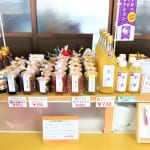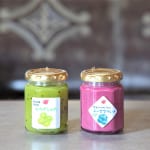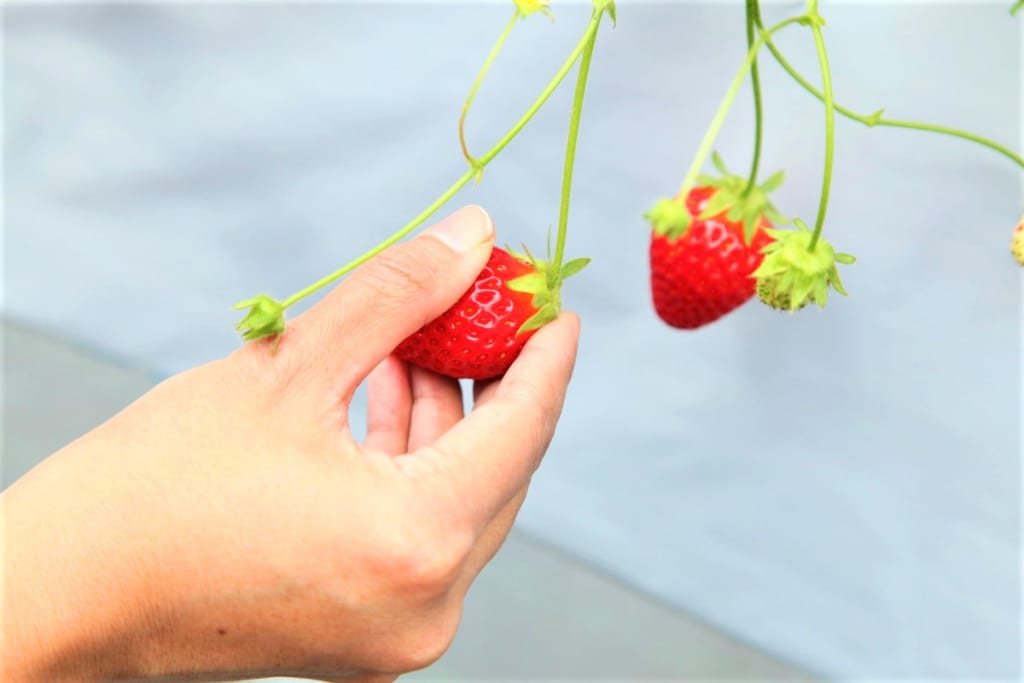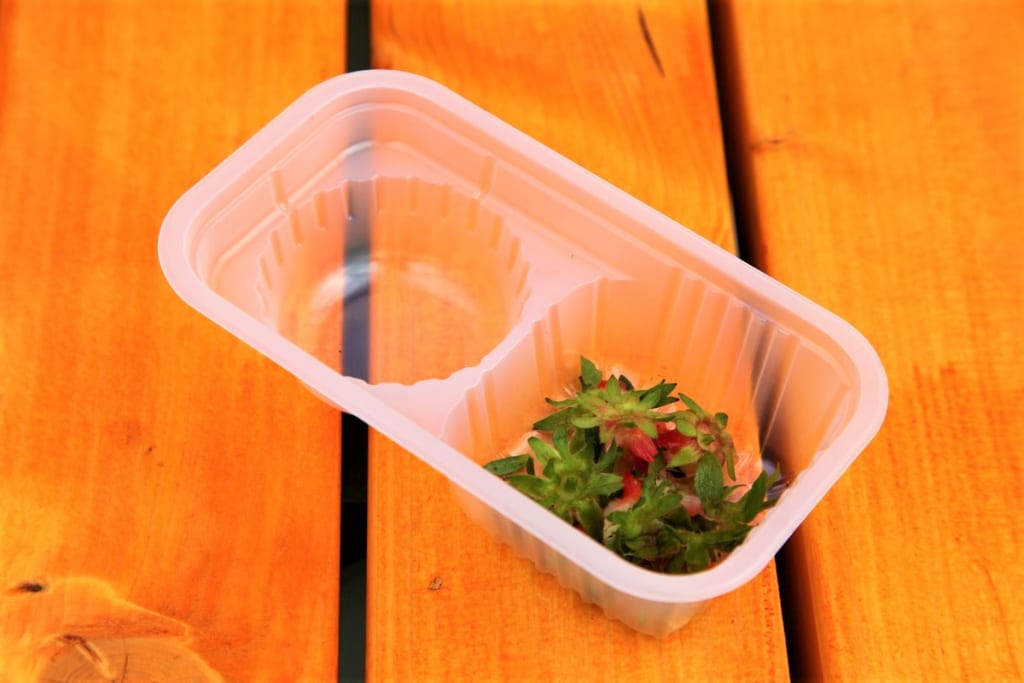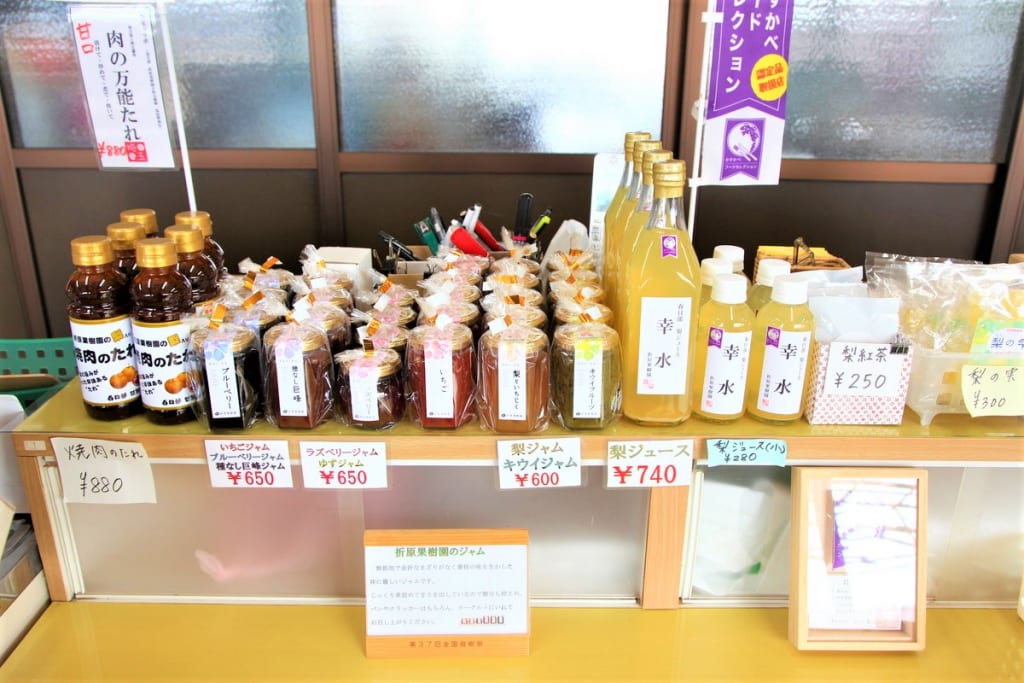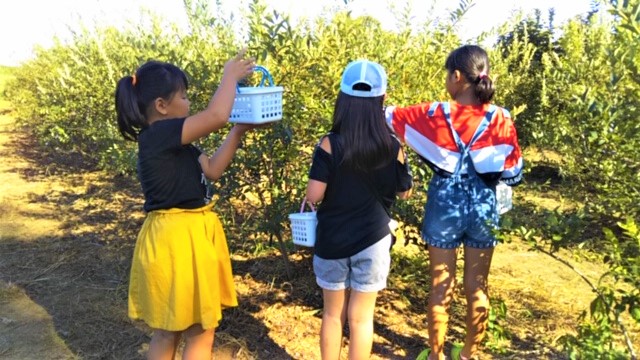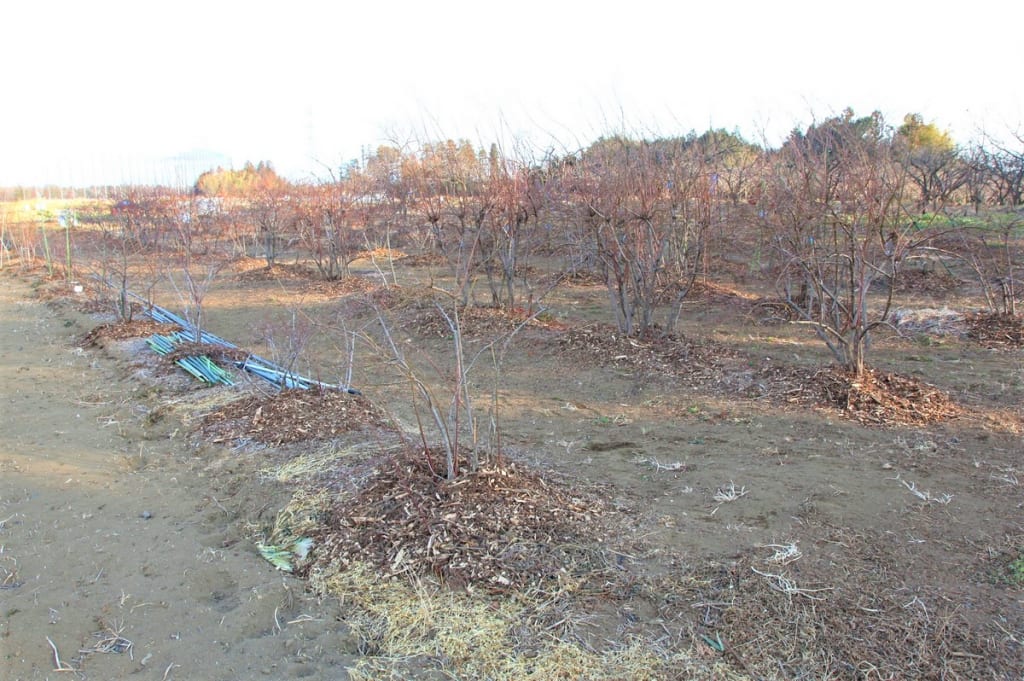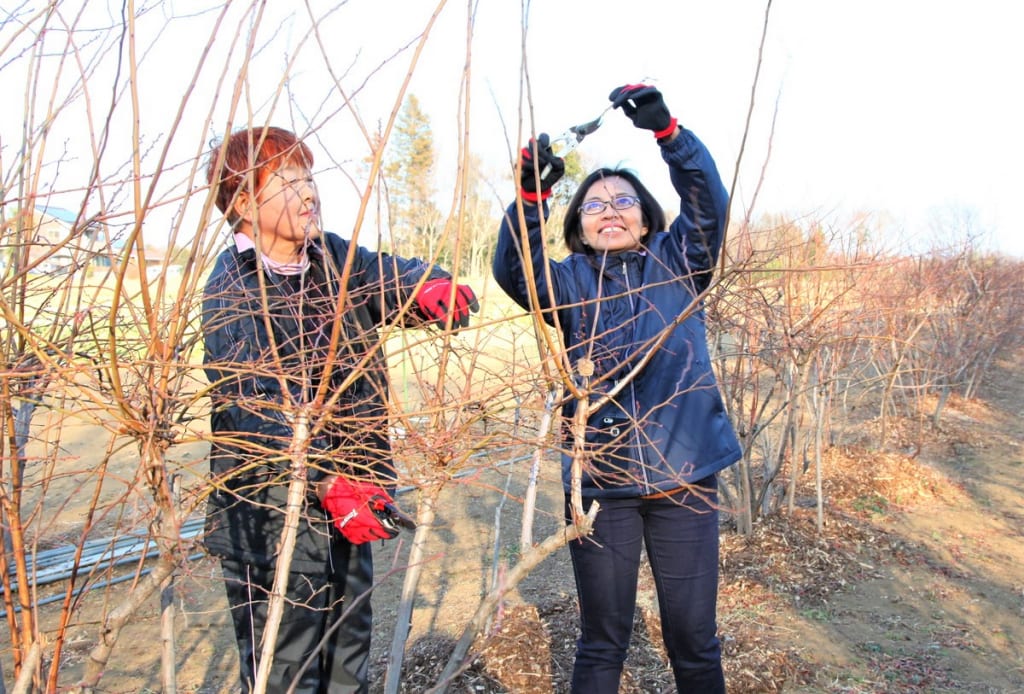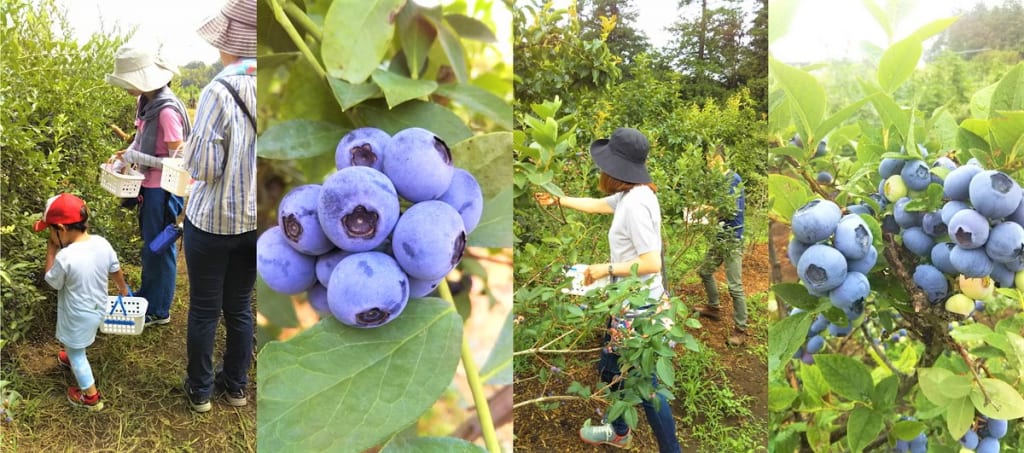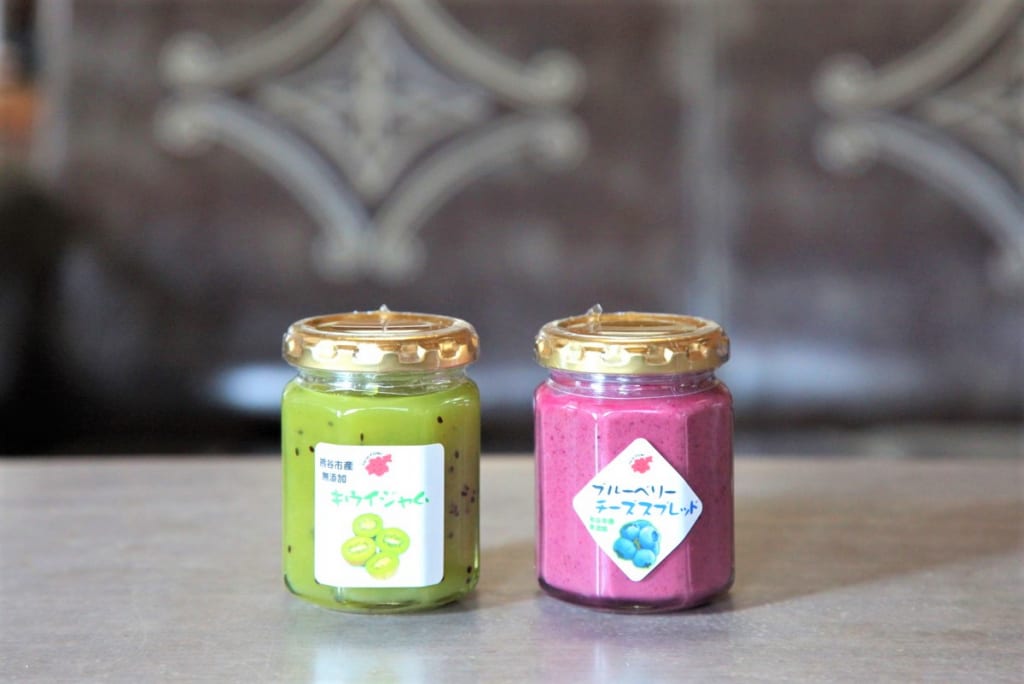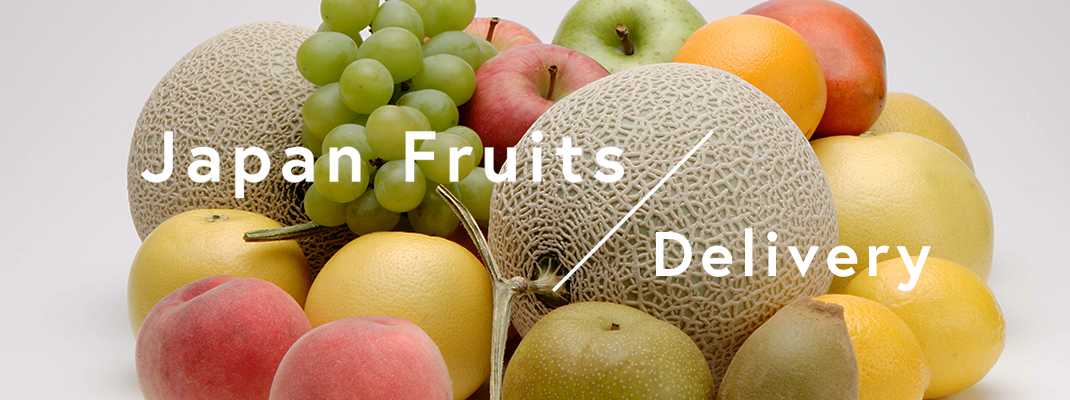Crown Of Great Efforts by Farmers in Saitama: ‘Tasty’ Experience Of Fruit Picking And Fruit Tree Pruning In Saitama
Japanese fruit is known for its quality and delicious taste. Not only does this expensive fruit, which occasionally appears on the news, and high-quality products from famous fruit markets maintain a beautiful appearance and consistent flavor, so do the common fruit that lines the shelves of supermarkets.
This is due to each fruit variety being improved and cultivated with time and labor.
These are skills and methods special to Japanese farms. Ms. Erna, an Indonesian traveler, went to experience a part of that world.
Orihara Orchards: Enjoy Picking Five Varieties Of Strawberry
Ms. Erna visited a spot in Saitama Prefecture, located directly north of Tokyo. With rich cultivation of fruit such as grapes, Japanese pears, and chestnuts, Saitama is an area where several sightseeing orchards capitalize on their great location from Japan’s capital.
Orihara Orchards, located in Kasukabe City in eastern Saitama, is one of those very fruit orchards. The orchard cultivates and sells several fruit products including Japanese pears, kiwis, persimmons, and Shine Muscat grapes. Strawberry picking is available from January to May.
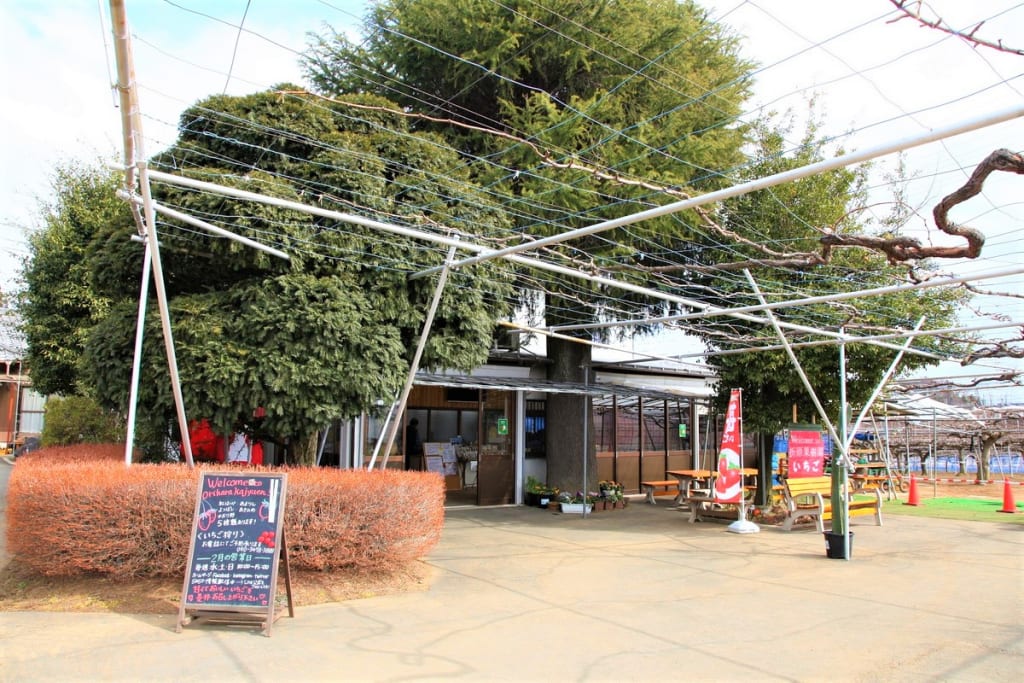
Entering the 1322-square meter plastic greenhouse of the orchard, you’ll find strawberries neatly organized into rows situated at an average person’s height.
There are five varieties of strawberry cultivated here: Kaorino, Amarin, Benihoppe, Yotsuboshi, and Akihime. All of them are available for sample tasting. Amarin, a new variety of strawberry developed by Saitama Agricultural Technology Research Center, is a rare strawberry yet to be cultivated by many farms. This is a valuable opportunity to try it.
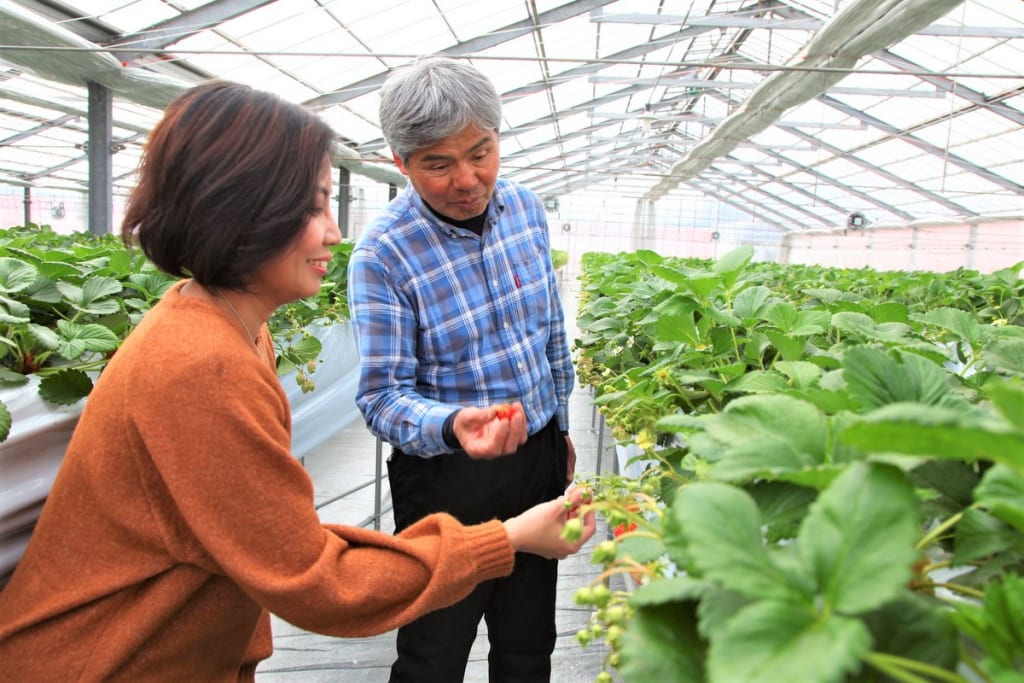
Ms. Erna did strawberry picking after she got a brief explanation how to pick strawberries by Mr. Orihara, the owner of Orihara Orchards.
According to Mr.Orihara, Strawberries that have a calyx curled backward and are completely red down to its sesame-like seeds on the surface are ripe and ready to eat.
You can easily pick the fruit by holding the strawberry in your hand, then pulling it by slightly twisting your wrist instead of straight towards you.
These strawberries are cultivated in an environmentally-friendly method so that you can eat them without washing.
Place the strawberry stems in the plastic container you’re given at the beginning, and then throw them in the garbage can at the end of your experience.
You can also bring sweetened condensed milk if necessary (you can purchase it at the orchards). Pour the condensed milk in the same container as the stems on a separate tray, then dip the strawberries in and enjoy.
Ms. Erna has tried strawberry picking multiple times. She said, very happily, “Japan’s strawberries are different from Indonesia in that they are huge and very tasty!”
Additionally, she smiled as she said, “I did not know that strawberries had this much variety. It is interesting how different each flavor is. The Amarin strawberries, in particular, have little acidity and are full of flavor. They are very delicious.”
It seems like this became a fun experience that cannot readily be found in her home country.
Passion For Strawberry Cultivation and the Latest Technology
How are the delicious strawberries at Orihara Orchards grown? We interviewed with the owner of the orchard, Mr. Orihara.
The strawberry cultivation method used at Orihara Orchards is a method called the hydroponics and soil culture system, which involves the use of elevated benches.
Strawberries are planted in soil piled up to the height of a person’s chest and are fed with fertilizer dissolved in water through pipes. This method makes the growing process very hygienic and very difficult for diseases to be contracted, even making it possible to cultivate strawberries as delicious as those grown through soil systems.
Various kind of machines, including pumps for supplying the fertilizer and a device that circulates air, are situated in a row in a corner of the greenhouse.
Mr. Orihara told us, “One day, we realized that to grow delicious strawberries, it was more important to allow photosynthesis to occur than to focus on feeding the soil with a good fertilizer.”
For that reason, a device that generates carbon dioxide and another device that circulates the gas are placed inside the greenhouse.
The greenhouse is entirely managed by computer; the state of the strawberries is consistently observed while the soil temperature and drainage contents are inspected in detail. Adding to this, ultra-violet ray light is radiated to strawberries for sterilization purpose every midnight.
Large amounts of equipment, plans, and, most importantly, passion is essential to cultivating delicious fruit.
Mr. Orihara also actively educates people through fruit.
“We have a large family. I think it is great to show my children how their parents work. I also want to help develop my children’s sense of taste by feeding them quality and safe fruit from a young age. That desire has now expanded not only to my own children but also through continuing to teach elementary schools and the locals about food education.”
Elementary school students have visited Mr. Orihara’s orchards on field trips and have left impressed after eating their fruit, “I did not know that pears could be this good.”
That experience will surely lead to safe food choices and acquiring more knowledge in the future. Mr. Orihara believes that to be so.
Homemade jams, juices, candies, and other processed foods are sold at Orihara Orchards.
Asian pears, a top product of the orchards, are not available during the strawberry picking season, but is a long-lasting product as a processed good and is sure to make the people you gift them to happy.
We recommend you to buy these processed foods, which are filled with the delicious flavor of Japanese fruit. Check the link below for more details on Orihara Orchards.
https://japan-gastrotourism-and-trade.com/fruits/en/2019/02/27/3103/?noredirect=en_US
A Pruning Experience At The Blueberry Farm FUMI
Next, we headed to Kumagaya City in northern Saitama Prefecture, an area popular for blueberry cultivation. Ms. Erna visited a blueberry farm called Farm FUMI.
Six varieties of blueberry are cultivated in this farm and blueberry picking is available from late June to early September.
We visited there in February, when the blueberry fields were covered with fallen leaves due to off-season.
Fruit actually also requires an immense amount of labor outside of its harvest season. Ms. Erna experienced the blueberry pruning, which is usually taken place in the winter.
What is the purpose of pruning blueberry trees?
According to Mr. and Mrs. Takahashi, the owners of the farm, “Blueberries can be made to grow large and plump by pruning. Sunlight and ventilation in the trees become better, thus making them healthier and has a restorative effect on its branches.” Therefore pruning is a quite important task for farmers.
Choose and cut long or old branches spread across the fields. Many of the buds growing on the branches will be either leaf or flower buds. However, the flower buds will not bear fruit if left unpruned and at an improper size.
It was for the first time that Ms. Erna both saw and prune a blueberry tree.
“It was fun to cut the branches, but I found it hard to quickly determine which branches to cut if not accustomed of. Next time, I want to take part in harvesting berries in the summer. The landscape around the blueberry fields made me peaceful and comfortable.”
All kinds of fruit tree are grown with the method of organic farming at Farm FUMI. Tending to the vast and spacious fields involve removing weeds by hand, feeding the soil organic fertilizer, and laying out chips that prevent dehydration, making it a very lengthy and laborious process.
Depending on the variety, blueberries can sometimes grow to a size bigger than a 500 yen coin. The green, lush blueberry fields in the summer are also sure to feel pleasant. The farm can also be safely enjoyed with children thanks to the lack of pesticide use.
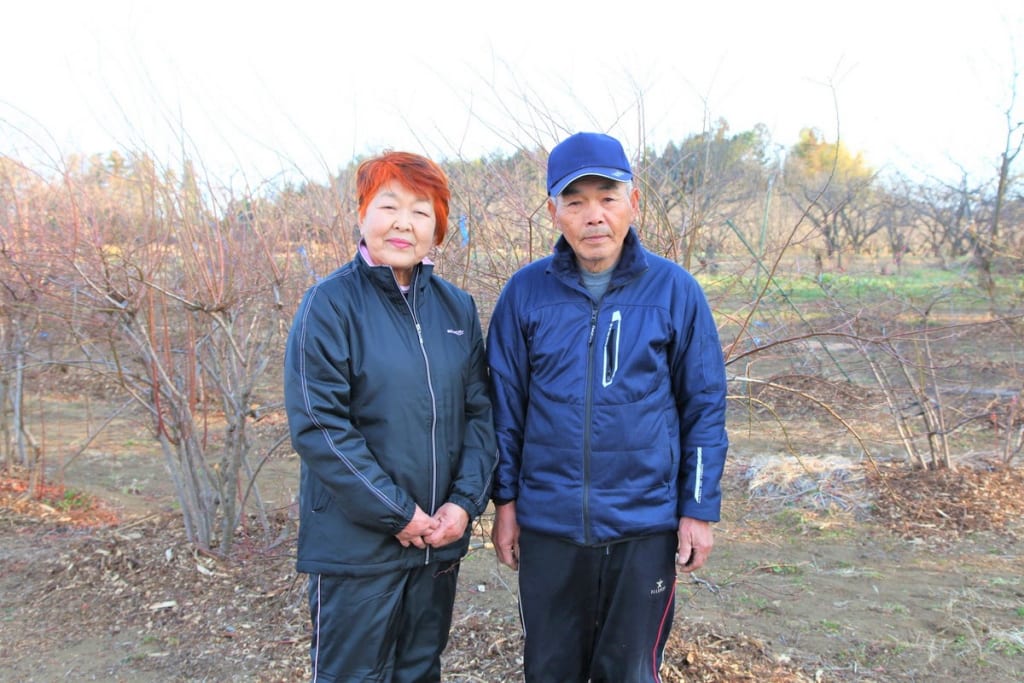
Mr. and Mrs. Takahashi used to be public employees. After retired several years ago, they succeeded the farm from their grandfather. From their wish to contribute to society as a farming household, they offer blueberry and chestnut pickings at reasonable prices while also providing rehabilitation support for the youth.
“This area is also visited by pheasants and hares. We hope that the visitors enjoy the sight of the unchanged, natural woodlands and the clean air.”
When you think of which product to choose for your souvenirs, we recommend the farm’s original kiwi jam and blueberry cheese spread (650 Japanese yen, tax excluded). The processed foods at Farm FUMI are good for your health since additives is not contained. With the use of organic sugar and domestic cheese, you will be able to enjoy the rich flavor of the fruit through these products.
Please check the link below for more details of Farm FUMI.
https://japan-gastrotourism-and-trade.com/fruits/en/2019/02/27/3102/?noredirect=en_US
In order to write this article, we interview people at each farm and came to understand the various efforts placed into growing fruits through actual experiences.
They also had a variety of desires and ideas for what fruit to grow and what they’d like to achieve in the future.
People passionate about agriculture are involved in growing this delicious fruit. Please keep in mind the types of methods and planning employed in growing this fruit the next time you go fruit picking in Japan!

